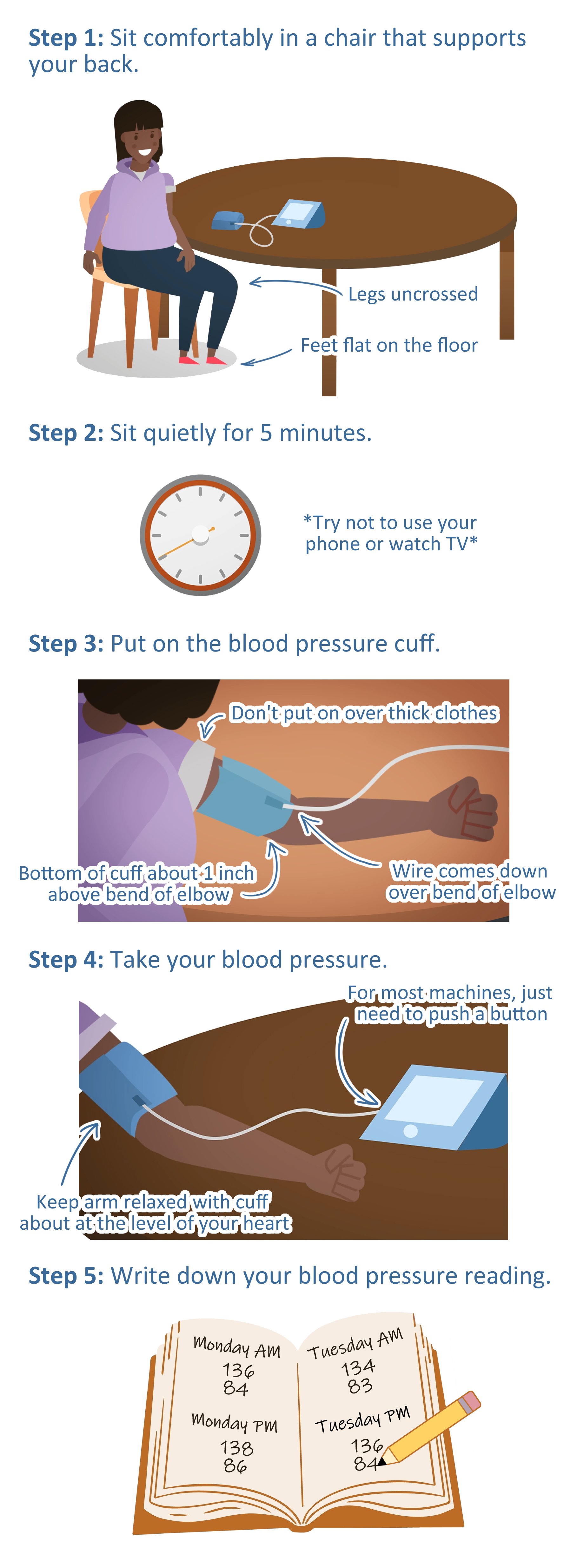To check your blood pressure at home, first you’ll need to get a blood pressure machine. Then there are simple steps you can take to get an accurate blood pressure reading.
There are a lot of blood pressure machines out there. You can buy them at pharmacies or even online. Some are better than others. Getting a good blood pressure machine is important or you won’t get readings that are correct. Check with your doctor or a pharmacist if you need help picking one out.
Once you have a blood pressure machine to use at home, follow these steps to get the most correct reading possible:
- Sit comfortably in a chair that supports your back.
Sit in a comfortable chair with your back supported. Sit with your legs uncrossed and your feet flat on the ground.
- Sit quietly for 5 minutes.
Rest quietly for 5 minutes. Try not to use your phone or watch TV. While sitting and doing nothing for 5 minutes is boring, distractions can raise your blood pressure, and you may get a reading that’s higher than it normally would be.
- Put on the blood pressure cuff.
Put the blood pressure cuff on your upper arm. Don’t put it on over thick clothes like a sweater. Putting it on over a thin shirt is ok, but it’s best to have a bare arm. The bottom of the cuff should be about an inch above the bend of your elbow, and the wire should come down over the bend of your elbow. If you don’t put the cuff on right, you won’t get a good reading.
- Take your blood pressure.
Keep your arm relaxed and with the blood pressure cuff about at the level of your heart. It can be easiest to rest it on a table to keep your arm relaxed. Keep your hand relaxed – don’t clench your hand in a fist.
Most machines work by just pushing a button. Read your machine’s instructions if you have questions about how it works. You can also bring it to your doctor or pharmacist if you need help figuring out how it works.
- Write down your blood pressure reading.
Writing down your blood pressure can help you keep track of your pressure over time. You can use a note pad, a journal, a fitness tracking app on your phone – whatever works best for you.
Before taking your blood pressure, make sure you haven’t recently smoked, had caffeine, or exercised. These things all raise your blood pressure for a short time. If you take your blood pressure too soon after, you may get a reading that’s higher than it normally would be. Wait at least 30 minutes after smoking, drinking caffeine, or exercising before measuring your blood pressure.
Try to take your blood pressure at the same time every day. Bring your results to the doctor whenever you visit so you can go over them together.
Checking your pressure is a breeze, you can do it at home with ease!



